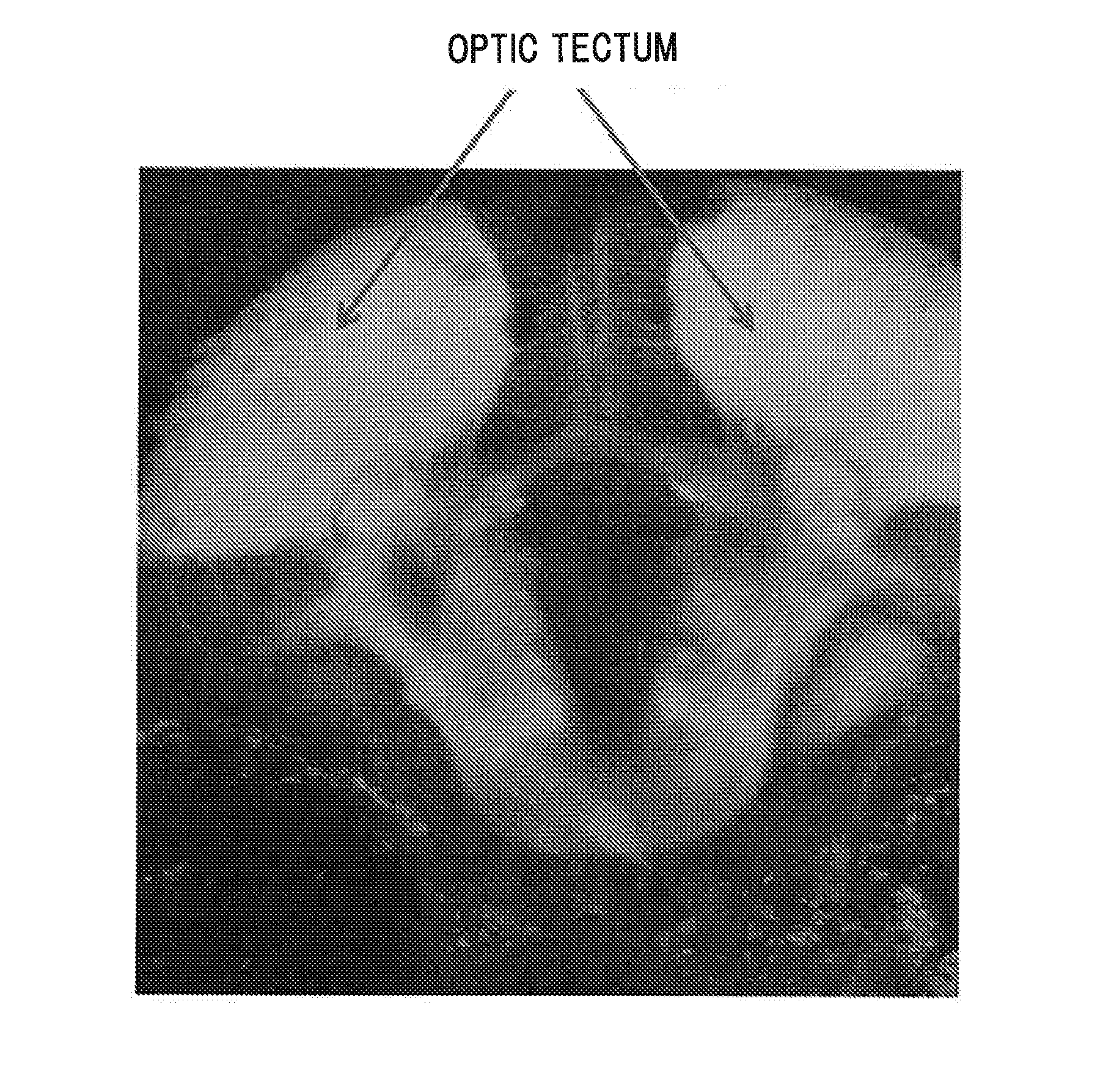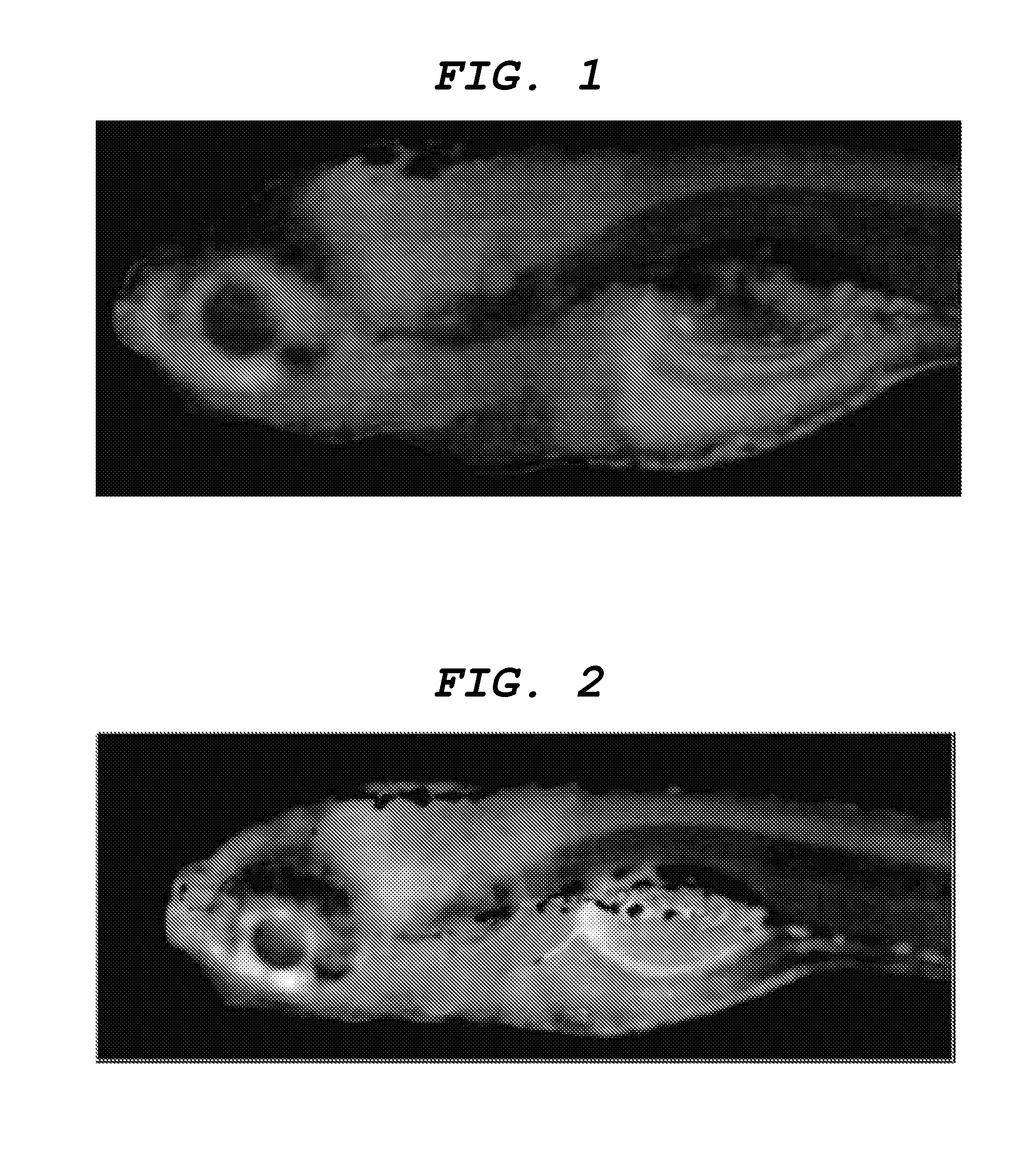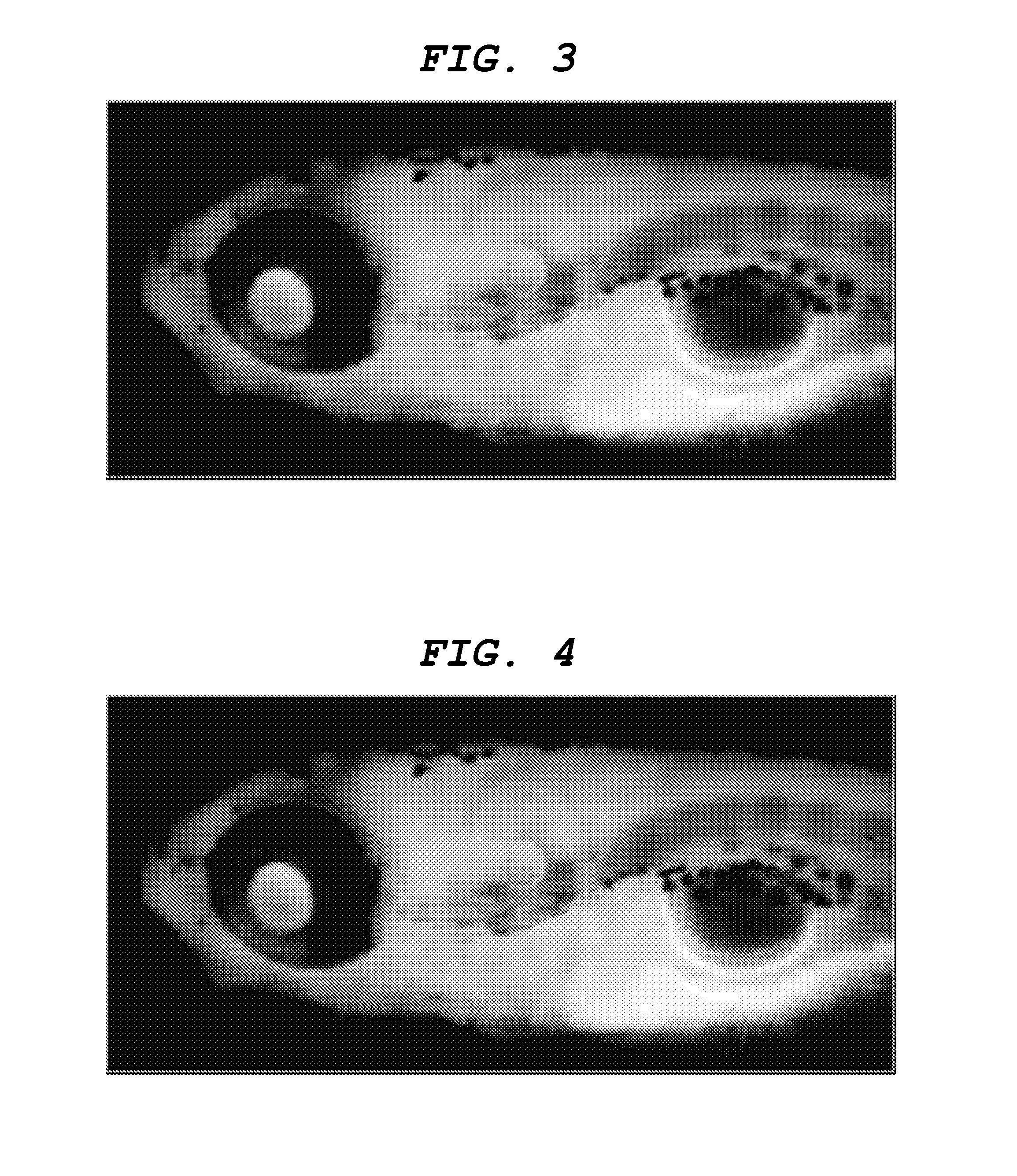Central nervous system tissue-labeling composition, method for labeling central nervous system tissue, and screening method using central nervous system tissue-labeling composition
a central nervous system and composition technology, applied in the direction of luminescence/biological staining preparation, x/gamma/cosmic radiation measurement, instruments, etc., can solve the problems of not being able to migrate into the brain of many of the compounds that can migrate into a normal tissue, and not being suitable for morphological imaging of a specific site in the brain, etc., to achieve novel, effective tools, and simple and highly precise assessment and analysis
- Summary
- Abstract
- Description
- Claims
- Application Information
AI Technical Summary
Benefits of technology
Problems solved by technology
Method used
Image
Examples
first embodiment
[0043]The central nervous system tissue-labeling composition according to a first embodiment of the present invention is characterized by containing, as an active ingredient, at least one of compounds represented by the general formula (1) or (7).
[0044]In the general formula (1), R1 to R2 each independently represent a hydrogen atom, an alkyl group, an aralkyl group, or an aryl group. Also, an aromatic ring A represents a skeletal structure represented by the following general formulas (2) to (4), or an aromatic ring A represents, through binding to R2 via N, a skeletal structure represented by the following general formulas (5) to (6):
[0045]In the general formula (2), R3 represents a hydrogen atom, an alkyl group, an aralkyl group, or an aryl group. In the general formula (3), R4 represents an oxygen atom, a sulfur atom, or N(R6), R5 represents a hydrogen atom, an alkyl group, an alkoxy group, or a sulfonic acid group, and R6 represents a hydrogen atom, an alkyl group, or an aryl g...
example 1
[0109]Labeling the central nervous system tissue with the central nervous system tissue-labeling composition Distilled water was added to a 1 mg / mL solution of the aforementioned compound (8) in DMSO to prepare a labeling solution 1 having a concentration of the aforementioned compound (8) of 1 μg / mL. Into an arbitrary well of a 24-well multiplate (manufacture by IWAKI), 1 mL of the labeling solution 1 and a day-7 embryo (7 dpf) of juvenile zebrafish were placed, and the plate was left to stand for one hour. Subsequently, the labeling solution 1 in the well was removed and replaced by 1 mL of distilled water. This operation was repeated three times. Then, juvenile zebrafish was removed from the well and embedded in 5% low melting point agarose gel on a slide glass so as to restrict movement, and the state of labeling in the central nervous system tissues were observed from the lateral side of zebrafish by a fluorescence stereomicroscope (manufactured by Leica Microsystems, MZ16FA). ...
examples 2 to 7
[0110]Zebrafish was labeled and observed by similar operations to Example 1 except for changing the dye compound (8) of Example 1 to the dye compounds (9) to (14) listed in Table 1 and for using labeling solutions 2 to 7.
PUM
| Property | Measurement | Unit |
|---|---|---|
| excitation wavelength | aaaaa | aaaaa |
| excitation wavelength | aaaaa | aaaaa |
| excitation wavelength | aaaaa | aaaaa |
Abstract
Description
Claims
Application Information
 Login to View More
Login to View More - R&D
- Intellectual Property
- Life Sciences
- Materials
- Tech Scout
- Unparalleled Data Quality
- Higher Quality Content
- 60% Fewer Hallucinations
Browse by: Latest US Patents, China's latest patents, Technical Efficacy Thesaurus, Application Domain, Technology Topic, Popular Technical Reports.
© 2025 PatSnap. All rights reserved.Legal|Privacy policy|Modern Slavery Act Transparency Statement|Sitemap|About US| Contact US: help@patsnap.com



